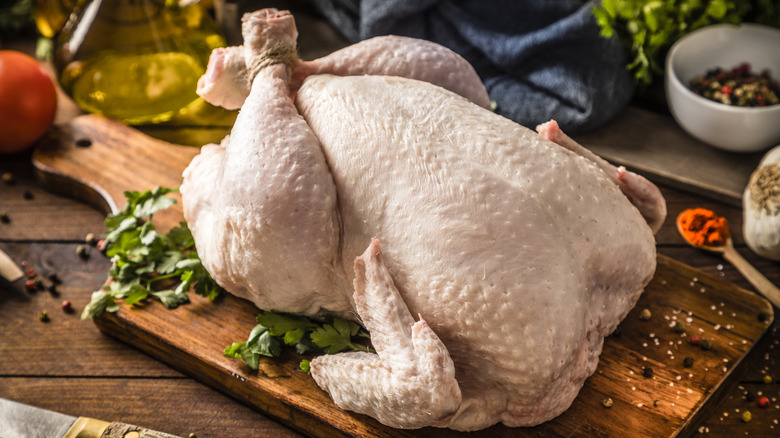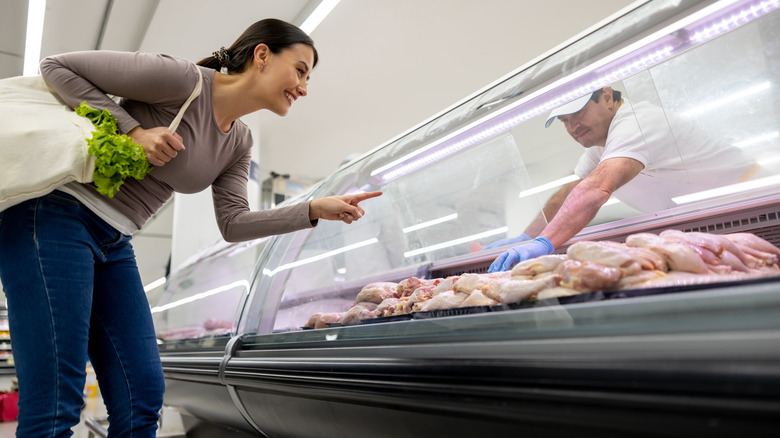The Old-Fashioned Hack For Picking The Best Whole Chicken
In a world where we increasingly rely on technology and modern conveniences to make life easy, sometimes it's still the tried-and-true old-school tricks that work best. That's definitely the case when picking out whole chickens at the supermarket or butcher, a process that all too many people, unfortunately, don't spend the proper time and care on.
For those looking for a quick trick to find better birds, the secret may lie in an often ignored part of the chicken, the breastbone. Locate this bone in the packaged bird and press gently on the front part. It should feel springy and flexible like cartilage, not hard and firm like regular bone. The younger, more desirable chickens will feel like the former, and these are the ones you should purchase.
To be sure, this isn't the only simple way to find a suitable choice when buying chicken. A close look should reveal meat with a pale pink hue and a yellow tint to the skin. But visual tests can be fooled with preservatives or other tricks, while sealed packaging can prevent buyers from noticing other warning signs like an off smell or slimy texture. Checking the breastbone is a top hack for chicken lovers because there's no getting around this fundamental, telltale signal of the bird's age, one of the most critical factors in the quality and flavor of chicken.
Knowing what to look for
While federal regulations allow the sale of chickens aged six weeks to one-and-a-half years for meat, there are several reasons you should prefer younger birds. For one, their meat is typically more tender, as their muscles have had less use. A side effect of this toughening over time is that older chickens need to be cooked longer, while younger ones are ready to eat more quickly.
Most consumers also prefer the milder taste of young birds to the slightly gamier taste that more mature ones can have. In addition, younger chickens tend to be the smallest chickens, a go-to sign for legendary celebrity chef Ina Garten. "The Barefoot Contessa" argues five pounds should be the upper limit, as anything larger will be difficult to cook evenly. By keeping these simple hacks in mind, you'll dramatically improve the quality of the whole poultry you're bringing home, resulting in more delicious, healthier meals for you and your fellow diners.

